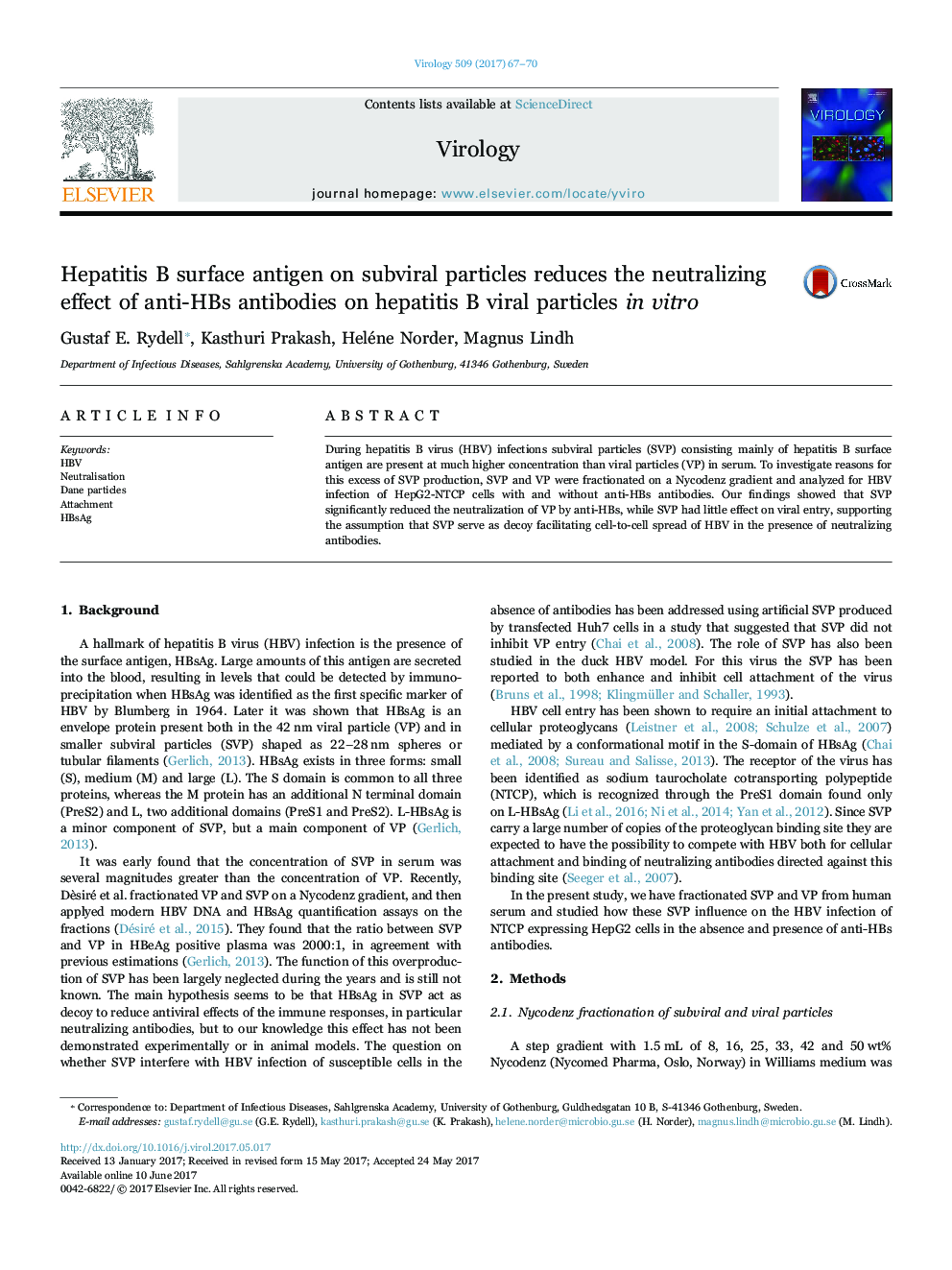| Article ID | Journal | Published Year | Pages | File Type |
|---|---|---|---|---|
| 5674942 | Virology | 2017 | 4 Pages |
â¢Hepatitis B viral particles (VP) and subviral particles (SVP) were fractionated.â¢SVP were efficient in protecting VP by adsorbing neutralizing anti-HBs antibodies.â¢SVP were less efficient in blocking viral entry by binding to target cells.â¢Thus, SVP may facilitate cell-to-cell spread in presence of neutralizing antibodies.
During hepatitis B virus (HBV) infections subviral particles (SVP) consisting mainly of hepatitis B surface antigen are present at much higher concentration than viral particles (VP) in serum. To investigate reasons for this excess of SVP production, SVP and VP were fractionated on a Nycodenz gradient and analyzed for HBV infection of HepG2-NTCP cells with and without anti-HBs antibodies. Our findings showed that SVP significantly reduced the neutralization of VP by anti-HBs, while SVP had little effect on viral entry, supporting the assumption that SVP serve as decoy facilitating cell-to-cell spread of HBV in the presence of neutralizing antibodies.
Graphical abstractDownload high-res image (142KB)Download full-size image
